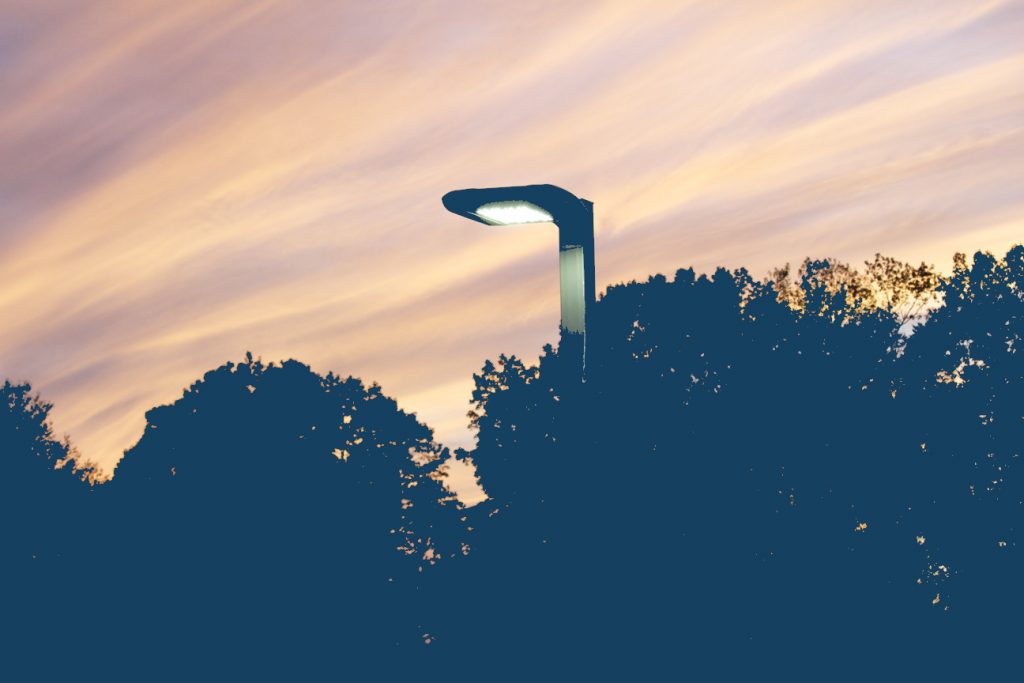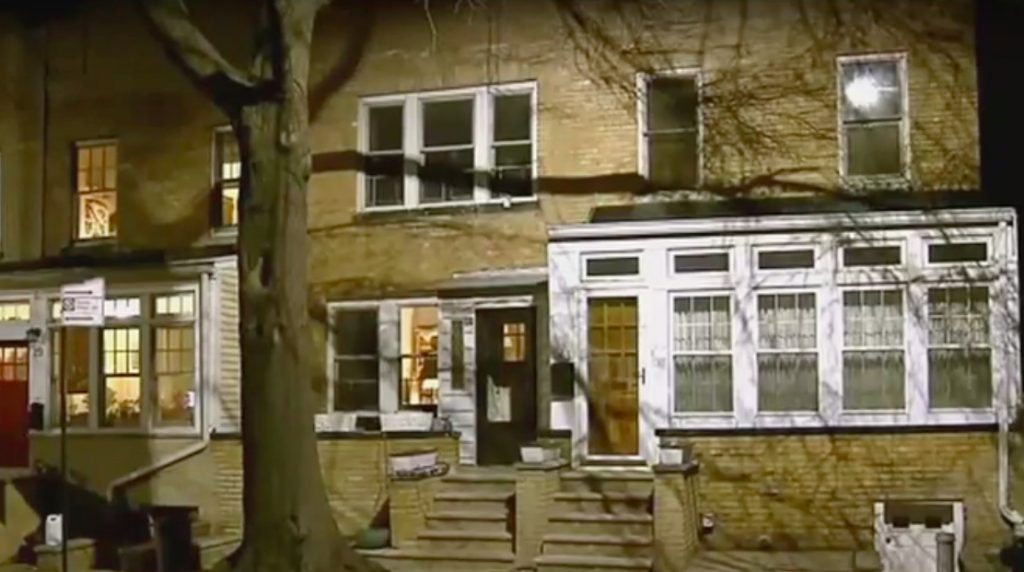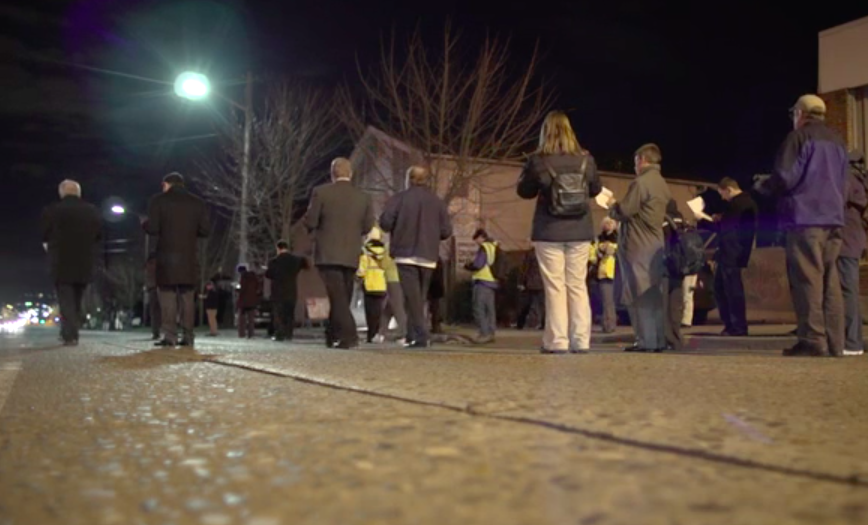AMA Outdoor Lighting Guidelines
Since the American Medical Association (AMA) released its guidance on street lighting on June 14, 2016, we have been asked by manufacturers and cities what impact that it may have. Smart Outdoor Lighting Alliance (SOLA) welcomes the thoughtful recommendations of the Council on Science and Public Health and supports its position. The report echoes the mission statement of SOLA and is the basis for our efforts.
We are disappointed with some reactions from the industry that infer the AMA shouldn’t be making recommendations on lighting without consultation with them and their predicable claims that safety will be compromised. Using safety concerns as a shield to deflect criticism, instead of real reflection and introspection, is a disservice to the public and seeks to cloud the issue. Safety, while of utmost importance to all, has many dimensions and too often only the parts that fit into a manufacturer’s sales narrative seem to get any attention. So while there is some research showing a slight increase in small target visibility (STV) using 4000K CCT vs. 3000K, in practice using higher CCT outdoor lighting can come at a high cost to the environment and the ambiance of residential communities. The increased perception of glare and light trespass from high CCT outdoor lighting can turn the appearance of an inviting residential street into something more akin to a strip mall.
[media-credit name=”Tracee Carrasco/CBS 2″ align=”aligncenter” width=”640″]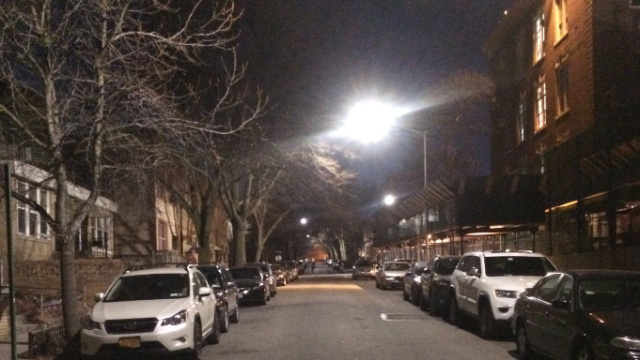 [/media-credit]
[/media-credit]
The AMA report reinforces SOLA best practices which dictate that lighting should be designed by professionals, used with concern for the environment, and that quality design trumps any improvement from higher CCT. The industry practice of promoting efficacy over everything else is shortsighted and has resulted in real harm to public lighting. We need to exercise balance and that is exactly what the AMA guidelines propose. What we don’t need are kneejerk reactions that are put forth to obscure the issues and promote public lighting that is not community friendly and disrupts residents’ peaceful enjoyment of their homes and neighborhoods.
Some of the worst public lighting retrofits have been installed with little regard for the real impact on safety from harsh glare. Poor lighting design can mask obstacles on the road like pedestrians, and cause injury and death. Furthermore, public lighting that creates glare and light trespass is also responsible for keeping millions of seniors off the road at night due to the aging eye’s increased sensitivity to it. Instead of creating quality lighting design that eliminates glare, transportation engineers routinely use lighting fixtures with large amounts of glare and design “by the numbers” to meet luminance targets and improve uniformity, with little or no concern for veiling luminance and improving actual visibility.
Lighting engineers need to be as concerned with quality lighting design and how lighting affects their customers, as they are about efficacy and meeting the parts of lighting standards that they like or understand. The balance between meeting standards and improving real visibility and safety is why trained lighting designers spend years studying their craft, and even more time honing these skills through practical experience. Lighting engineers who don’t understand vision and visibility should not be designing street lighting, period.
All new lighting projects should be mocked up first and ultimately evaluated by the public to get “customer” approval and endorsement. The insular municipal culture that thinks “we know better” or that lighting is too complicated for citizens to understand is wrong and needs to be abandoned. Public engagement will validate good designs and quickly reveal problems with bad designs before they become too expensive to fix. Wasting taxpayer dollars on large-scale replacement of fixtures to remediate design problems like high CCT is unforgivable. To avoid potential disasters, supervisors need to ensure that staff is given appropriate training and/or qualified lighting design professionals are used as consultants whenever necessary.
Lighting manufacturers sold high CCT LED initially because it was the only option that was as efficient as existing HPS. That was then, this is now. New 3000K CCT chips have similar efficacy to 4000K CCT. Let’s start focusing on what’s best for the community.
The industry has made great progress over a very short time to improve both the quality of LED fixtures and the efficacy of warmer CCT options, but now is not the time to rest on success. The AMA report gives us clear guidance that 4000K CCT cannot become the default for all public lighting. While the industry may not have been as concerned about the potential negative ecological and health impact of blue-rich white light in the past, it better wake up and smell the future. Nothing will slow down the progress that LED manufacturers have enjoyed so far, than an international debate on the human health consequences of its products.
[media-credit name=”Davis Vanguard” align=”aligncenter” width=”600″]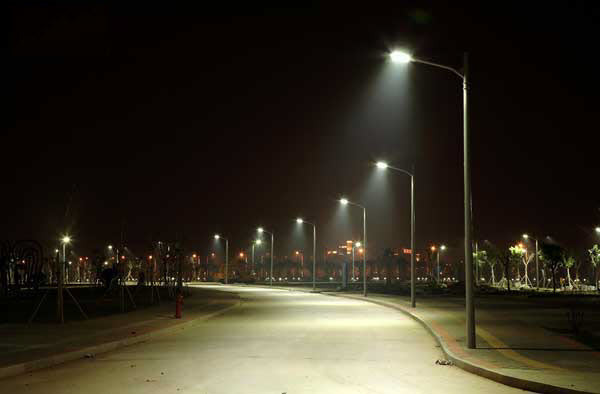 [/media-credit]
[/media-credit]
While efficacy and saving energy is an absolutely laudable goal, they are not the only important considerations for public lighting and they have not been pursued to their limits thus far. Adaptive controls and lighting standards that allow dimming of lighting levels after peak traffic periods have been available for many years and, for the most part, cities have not been using them. Both the fear of crime and the misinformed belief that more light will help reduce it have driven most cities to use the same amount of illumination from dusk to dawn. So when proponents of higher CCT insist that a reduction of 3-5% in efficacy is unacceptable, why are they not equally concerned about the 30-40% less efficacy that results from not using controls and existing standards? This way of thinking is hypocritical and it’s time for manufacturers and standards groups to start promoting maximum efficacy for public lighting using smart controls.
In addition, the current lighting standards specify essentially the same lighting levels using broad-spectrum white light as they do for HPS. Using white LED, these recommendations are too high for residential neighborhoods and need to be revised straightaway, not 5-10 years from now after half the planet has installed LED fixtures.
In closing, a lighting industry that embraces science and research to develop LED technology, needs to also accept the science and research behind the AMA guidelines in this report. While we can always use more research on this issue, let’s use what we have responsibly and adopt the precautionary principal of doing no harm while we fund more quality, peer reviewed studies. To claim that it knows better than the AMA is ludicrous and embarrassing. Take solace that the report has been released at this time when the changes being recommended can be easily accomplished and before 90% of the world’s lighting has been replaced. Time to target better efficacy using dimming, quality outdoor lighting design and the public good. Stay calm and evolve.
Industry responses to the AMA Guidelines:

